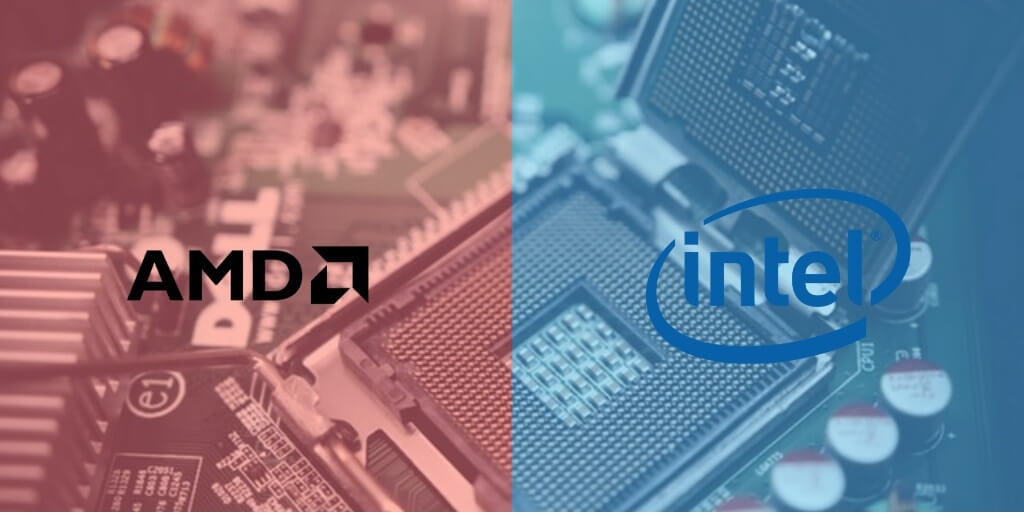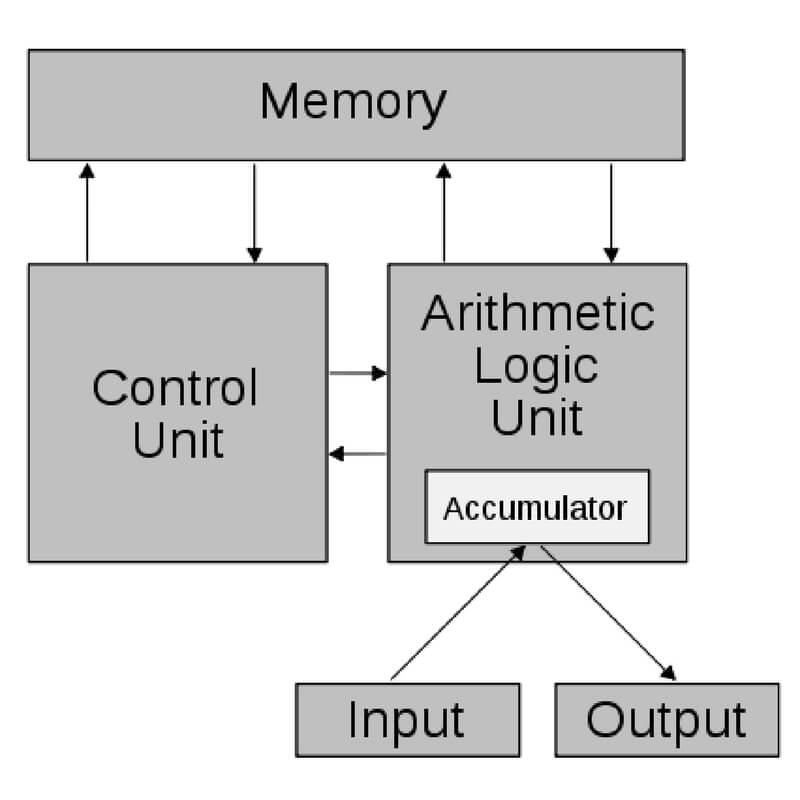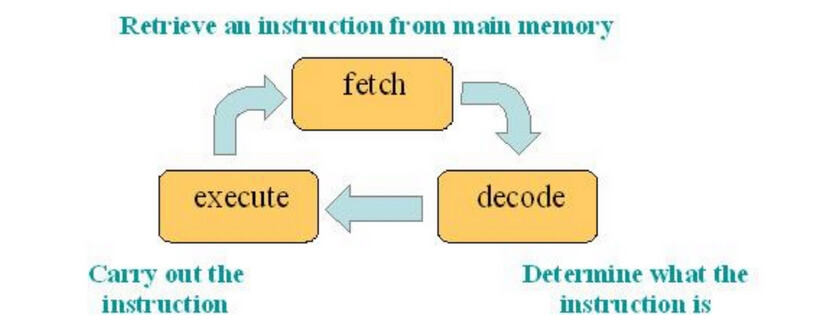The Central Processing Unit (CPU) handles all the instructions from a computer’s software and hardware. The importance of this component is largely felt when it comes to the task you want to perform.
It’s also referred to as a processor, central processor, or microprocessor. With each new CPU release, laptops are becoming faster, more powerful and more efficient. Essentially, the faster the CPU = the faster your laptop.
This article is first sighted on Gigabytekingdom.com and used for the study guide for the purpose of this content.
Trying to make sense of all those numbers, abbreviations and other technical specifications as you shop for a new laptop can be intimidating. Use this guide to familiarize yourself with the different parts of CPU and their function.
What Is A CPU?
Acronyms are the tech world’s attempt at making confusing technology more accessible. This effort isn’t always successful, however.
The terms “CPU” and “processor” are often used interchangeably. While this is technically correct, a laptop is made up of many processers.
And although, it’s often referred to as the “brain of a computer”. In truth, it’s more like the heart since (like the human heart) it’s important for the performance of a laptop’s system.
In actually, the software is the brains of a computer because without it, a laptop would have all the usefulness of a very efficient calculator.

What Does A CPU Look Like?
It’s basically a silicon chip in the shape of a square or rectangle with millions of microscopic transistors. On the bottom and backside are hundreds of short, rounded, metallic connector pins.
Where Can I Find The CPU?
A CPU’s connector pins plug into corresponding holes in a socket found on the motherboard of a laptop. The notched corner of a CPU helps you guide it (pin-side-down) properly into the compatible socket located on the motherboard. A small lever secures the CPU in place.
CPUs Get Hot
After running even for a short while – like other components on a laptop – CPUs produce heat. Heat sinks and cooling fans are usually attached on top of the CPU to keep them cool and running smoothly. Some laptops come bundled with cooling components for the RAM, GPU and CPU. Advanced cooling systems include: water cooling kits, which you’ll find in gaming and workstation level laptops.
Internal Components Of A CPU Explained
The 3 main parts of a CPU are the ALU, CU and memory unit. Since the 1970s, these components have become so integrated into the overall design of a CPU that it’s difficult to recognize them from the outside.
So, here’s a basic CPU parts list to clear things up:

- The arithmetic logic unit (ALU) performs mathematical, logical, and decision operations. It can be divided into the arithmetic unit (responsible for addition, subtraction, multiplication and division). And logic unit (responsible for comparing, selecting, matching and merging different data or information). The power and efficiency of the CPU depends on the design of the ALU.
- Next up is the control unit (CU) which directs all the processor’s operations. It’s where the CPU reads and interprets requests from memory and transforms them into a series of signals (binary). Then it sends the operation to various parts of the laptop as instructed. The CU calls the ALU to perform the necessary calculations. It also coordinates all input/output devices to transfer or receive instructions.
- The main job of the memory unit is to store data or instructions and intermediate results. It’s divided into primary memory and secondary memory to supply data to other units of the CPU. It allows the CPU to perform functions requested by programs like the operating system without having to ask RAM.
Another element of the CPU not depicted in the diagram is transistors. To carry out calculations, binary information (ones and zeros) is stored in these microscopic switches. They control the flow of electricity depending on whether the switch is ON or OFF. Signals turn off and on different combinations of transistors to perform calculations. A very thin silicon chip can contain several hundred million transistors.
How Does A CPU Work?

The main function of a CPU is to take requests from programs, applications, peripherals (like, the keyboard, mouse, and printer) and interpret what they need. It then performs the request, or outputs information onto the display.
CPU Cache
Cache is a type of fast memory that buffers between RAM and the CPU. It’s like a temporary holding place on the CPU for data that’s used all the time. The front side bus (FSB) of a CPU connects with RAM on the motherboard.
Instead of relying on RAM for commonly used data. It’s stored on the CPU’s cache, which is faster than RAM because of its physical proximity to the CPU’s processors. This setup allows the CPU to take requests off memory, greatly increasing laptop speeds.

There are three levels of cache. Whether the CPU has an L2 or L3 Cache, on-the-other-hand, is a reference to the CPU’s on-board memory. It determines how speedy this on-board memory will be during processing. The more cache you have, the faster your CPU will perform.
The REGISTER is just a small amount of data storage that helps with some CPU operations. But it’s not cache.
Binary Is A CPU’s Native Tongue
The laptop CPU handles two types of data at any given time: Data that needs to be processed and the program code connected to it. These are written in bits – a binary sequence of ones and zeros which is the language the CPU understands.
A processor doesn’t receive a consistent flow of data. Instead it’s received in smaller chunks, called a “word” or bits. The CPU is limited by the number of bits in a word. This determines the amount of information that can be processed at one time during one cycle of the laptop’s internal clock. And the amount of RAM that can be accessed within the same time.
Whether your laptop can run a 32-bit or 64-bit operating system (OS), for instance, depends on the size of data units the CPU can handle. More memory can be accessed at once, and in larger pieces with a 64-bit CPU. Which is why you’ll find that a 64-bit OS can’t run on a system with only a 32-bit CPU.
As a result, since the OS plays a key role in communicating with hardware components. It needs to be on the same level as the CPU to handle process scheduling, memory addressing, and storage accessing. That’s why an OS is either marketed as 32 or 64-bit.
The Power Of Multiple Cores
How quickly a CPU can process data is also affected by the number of cores it has.
A CPU contains at least one processor or “Core,” which is the chip inside the CPU that performs calculations. In the early days, CPUs only had one core. This limited computers to a single set of tasks, which made computing slow and time-consuming.
Multi-core CPUs address this time constraint by including more than one processor core on a single chip. In general, by increasing the number of cores CPUs can handle multiple processes simultaneously, making them more efficient.
Types Of CPU
The power of the CPU determines the speed at which software programs can operate. More cores mean a CPU can do more work. A CPU with DUAL, TRIPLE or QUAD cores will make a significant difference in the processing power of the laptop you choose. The best is from Intel’s Core i5 familyof CPUs.
Single Core CPU
These are the oldest types of CPUs. Since they can only start one request at a time, they’re not very good for multitasking. If you often run more than one application at a time, you’ll notice a sharp decrease in performance. Clock speed largely affects the performance of these types of CPUs (we’ll talk more about clock speed in a moment).
Dual Core CPU
This CPU has two cores that give it the performance of two CPUs. Dual Core CPUs can handle multitasking much more efficiently than Single Core CPUs: If you call on more than one application, it can start them at the same time instead of switching back and forth between different data streams. But in order to take advantage of this technology, the operating system and the program running on it must have a special code written on them called SMT (simultaneous multi-thread technology).
Quad Core CPU
These CPUs refine dual core technology. They supersede them by adding two more cores for a total of four to the CPU design. Quad Core CPUs allow for even greater multitasking. But just like dual cores, unless the program the CPU is running has the SMT code written on it, you won’t feel the difference. And, it doesn’t mean that just one request will be accomplished faster. Rather, your laptop will feel more responsive when you start more than one request at a time.
CLOCK SPEED
Once upon a time, frequency (Clock Speed or clock rate) was a CPU’s most important performance metric. Clock speed measures a CPU’s operating speed and indicates how many operations it can perform in a second (CPU cycle).
Clock Speed used to be measured in hertz (Hz). But due to speed improvements given by the extra cores in a CPU, it’s now measured in gigahertz (GHz).
Clock speeds are useful for comparing CPUs within the same family. Say you’re you’re comparing two laptops with a dual core Kaby Lake i5 CPU. One has a clock rate of 2.2GHz and the other has a 2.5GHz base frequency. The latter will perform faster when both are running at their Max Turbo Frequency.
Clock Speed Determines The Power Of The CPU
But not necessarily the processing power of the laptop. What does this mean?
A CPU with a Clock Speed of 2GHz can process 2 billion instructions each second. But, doubling this to 4GHz won’t necessarily double the processing speed of the laptop.
Unless, the laptop has two CPUs working side by side. Then it will be able to manage twice the instructions per second, drastically improving the system’s performance.
There are other components that determine how fast a laptop CPU executes tasks besides the clock speed. Add hyper threading to the mix and the CPU can perform even more tasks at once for a MUCH faster laptop.
Hyper-Threading
A “thread” (like a word when we were talking about cache) is a stream of data.
Remember that an individual processor can only execute one instruction at a time. As such, if you’re running multiple programs. Each thread into the processor must be scheduled and executed by the core individually. This causes the delay you notice when you’re multitasking with more than one program open.
Hyper-Threading is a technology that helps each processor core schedule and assign resources to two threads of data at once. So, a dual-core CPU can “virtualize” two more cores, making it act as if it had four processing cores.
TO dive deeper into this explanation, let’s look at Intel’s Core i chips for a moment. From least to most powerful: there’s Core i3, i5, and i7. Core i3 CPUs are dual-core chips. Core i5s can be either a dual or quad core chip, and a Core i7 is a quad-core chip.
What distinguishes Intel’s Core i5 CPUs from the Core i3 and i7 is that they don’t support Hyper-Threading.
Turbo Boosting
Turbo Boost is a feature that distinguishes i5 and i7 chips from Core i3s. This technology enables the processor to increase clock speeds past its base speed whenever the need arises. Intel processors ending in a “K” can be overclocked, which means this additional clock speed is available all the time.
Here’s The Function Of A CPU With A Diagram

Different Functions Of A CPU
As we said from the beginning, a CPU is like a very efficient calculator. Every operation you do on the laptop has to go through this vital component. In the process of decoding data, the CPU performs four basic steps:
- Fetch. Requests are stored in memory each of which have their own address. In this step, the processor takes the address from the program counter which is responsible for the request the CPU should execute next.
- Decode. In this step, programs to be executed are processed into Assembly code which are then decoded into binary instructions.
- Execute. Here, one of three things happen: 1) The CPU performs calculations with the ALU. 2) The CPU moves data from one memory location to another. 3) Or the CPU jumps to different addresses.
- Store. In this final step, the CPU gives feedback after executing a request and the output is written to memory.
Thermal Design Power
TDP is another technical term you’re sure to come across regarding a laptop CPU. Unlike desktop CPUs, mobile CPUs need to strike a balance between performance and power consumption.
TDP measures the maximum power in Watts a CPU will consume. It ultimately determines how power efficient the laptop will be. And it’s an important metric for determining how cool your laptop will stay when in use.
A Brief History Into The World Of CPUs
The 4004 was the world’s first CPU. Developed and released by Intel in 1971, it had 2300 transistors and performed 60,000 operations per second.
For comparison sake, Intel’s Pentium CPUs-which aren’t very powerful by today’s standards-has 3,300,000 transistors. And performs around 188,000,000 instructions per second.
CPUs have undergone dramatic improvements in capabilities since the 4004 chip. Now you can find them in laptops, tablets, phones and televisions.
The can handle other functions like Wi-Fi. And many laptops share a chip with graphic electronics in what’s called a chip set, which is a group of microchips located on the motherboard.
These mobile, multi-purpose chips are known as SoCs (system-on-a-chip. They’re optimized for efficiency and low power-consumption which allows the device’s battery to last hours without charging.
Intel and AMD are the leading manufacturers of CPU. Although both make CPUs of varied strengths under a lexicon of model names. Almost all laptops have an Intel CPU.
New CPUs are built on a “backward compatible” architecture. They can understand components that came prior to their release. The concept was introduced by Intel in 1978 with the 8086 processor.
The CPU Perspective
Among other contributing factors, CPU performance is becoming less critical to the overall performance of a laptop.
So, it’s better if the laptop you choose has fewer clock cycles but can do more work instead of more clock cycles with less work. This will not only produce less heat but improve battery life.
If you want your laptop to do more work simultaneously, you’ll need a CPU with more cores. Not only are modern CPUs manufactured with more Cores, but they’re also endowed with a more robust cache.
Which means modern CPUs can do more per clock cycle. This fact makes clock speed still an important specification to consider when qualifying CPUs because it’s what allows a dual-core CPU to outperform a quad-core CPU.
Wrapping Up
The big takeaway here is that all the technological advancements we’ve seen in CPUs is driven by our desire for a speedier computing device. Getting the right type of CPU is important for what you expect your laptop to handle. For activities like multitasking, having more cores is like having two, three, or four CPUs working simultaneously.
Even though the CPU is not the overall factor in the speed and functionality of your laptop, the choices you make will affect those other factors for years to come. We hope this guide gives you a better understanding of the different parts of CPU and their function so you can choose the best one for your new laptop.
